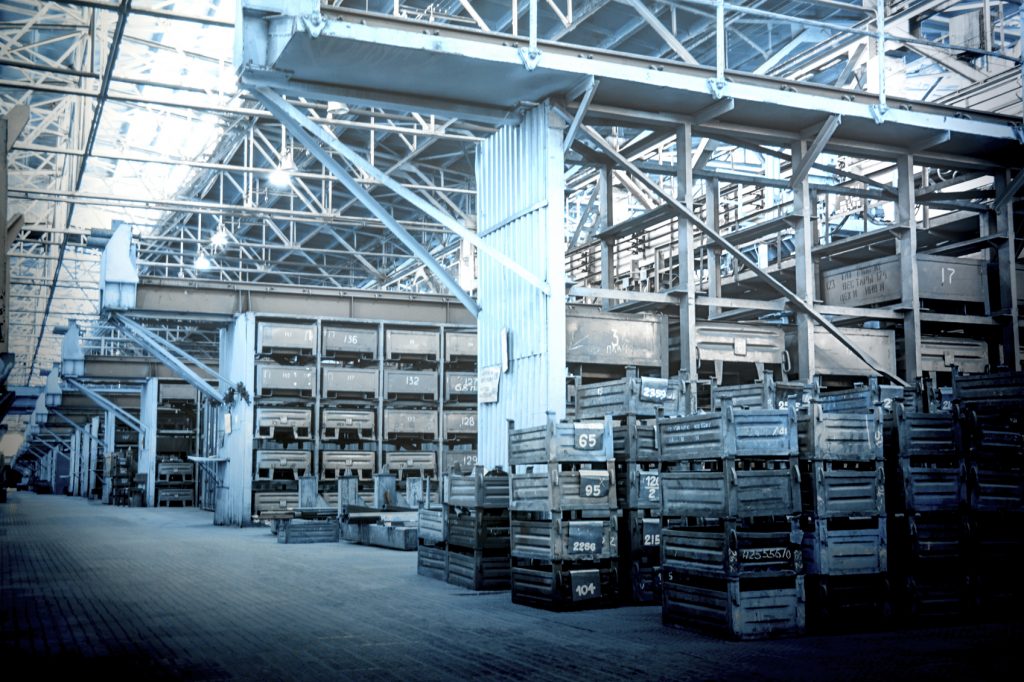
The Global Warehousing & Logistics Networks 2016 Report
NEW and Exclusive to Ti InsightAbout the 2016 Global Warehousing & Logistics Networks Report
Ti’s new report Global Warehousing & Logistics Networks 2016 examines the shifting landscape of supply chain real estate and the changing patterns of distribution on a global basis. Throughout the logistics industry, economic pressures, the rise of the global middle class, the increasing importance of emerging markets as both manufacturing locations and end markets, as well as the growth of e-commerce, are fundamentally changing the shape and character of logistics networks. As a result, logistics service providers and the retailers and manufacturers they support must reassess not only how to best design their logistics facilities to meet requirements, but also where to position network locations to meet demand and commercial imperatives.
Global Warehousing & Logistics Networks 2016 explores the key issues within this continuously evolving supply chain debate from global and regional perspectives.
This report contains
- Extensive analysis of the economic factors impacting warehousing strategies
- Comprehensive profiles of industrial property developers
- Analysis of evolving role of the warehouse in the supply chain
- Insight into the technological developments utilised in warehousing and logistics networks
- An examination of evolving supply chains by vertical sector logistics analysis
- An examination of warehousing dynamics by region
This report contains
- Extensive analysis of the economic factors impacting warehousing strategies
- Comprehensive profiles of industrial property developers
- Analysis of evolving role of the warehouse in the supply chain
- Insight into the technological developments utilised in warehousing and logistics networks
- An examination of evolving supply chains by vertical sector logistics analysis
- An examination of warehousing dynamics by region
Exclusive Highlights on the role of
warehousing in the supply chain
- Although the fundamental goals of logistics have not changed, to get the right products into the right place, at the right time and at a competitive cost, logistics is more complex than ever before. The evolution of global networks of interrelated and interdependent systems, processes and actions is behind the shifting landscape on which logistics real estate and networks are built.
- LSPs should expect further pressure for productivity, utilisation and other efficiency gains. Improvements in cycle times will only gain in importance as e-fulfilment operations become a competitive differentiator
- Most large companies operate many different IT systems and technologies throughout their supply chain, as a result of legacy purchases in different areas, as well as M&A integration. This patchwork approach is currently the norm, particularly given that companies have only recently begun to adopt cloud based systems, but start-ups have the potential to disrupt this dynamic.
- Unsurprisingly, IOT systems are well suited for applications within the supply chain, where accurate and reliable data holds the potential to dramatically cut costs, but the concern which has thus far constricted the adoption of smart devices throughout industry is a security risk.
Exclusive highlights on the economic
metrics shaping logistics networks
- Warehousing and logistics networks are very much in the process of formalising in emerging markets, some from an extremely low base, whereas they are already highly formalised in developed markets.
- The underlying architecture of world trade has changed dramatically following the rise of ‘global value chains’ as firms and countries now increasingly specialise in ‘stages of production’ rather than specific final goods.
- As a result of seasonality warehouse networks can be both under-utilised for much of the year and stretched at peak times: to accommodate the peaks and troughs, warehousing practises are becoming more dynamic.
- Warehouse obsolescence is an important driver of market change as it implies a reduction in the supply of industrial real estate, which puts upward pressure on rental rates. However, it should really be viewed as a structural driver of demand for new facilities owing to the need to upgrade.
Nick Bailey
As Managing Consultant, Nick works with Ti’s global client base to deliver bespoke research projects which offer both strategic and operational insight. Nick leads projects from conception to delivery, ensuring clients receive the highest quality analysis and actionable outcomes, with specialisms in e-commerce, the road freight market and emerging market logistics. Prior to joining Ti in 2013, Nick spent several successful years working in international trade and foreign direct investment.
David Buckby
Having obtained a Masters in Economics David is now Ti’s resident Economist. David manages one of Ti’s core strengths, that of quantitative analysis of a range of logistics markets, including sizing and forecasting.
Alex Le Roy
As a graduate in International Relations, Alex brings a variety of knowledge and interest to his role as an Analyst at Ti. Alex’s drive to constantly provide quality analysis for the logistics industry has led him to increase his area of responsibilities to include investigating the potential for new products, training new recruits, and scanning the horizon for the next big thing.
- The evolution of global supply chain networks is behind the shifting landscape on which logistics real estate and networks are built.
- Demand for improvements in cycle times will only gain in importance as speed and quality in e-fulfilment operations become a competitive differentiator
- New technologies, the cloud and start-ups all have the potential to disrupt how real estate developers, LSPs, manufacturers, and retailers manage and operate their warehouses and logistics networks.
- Security risk and costs are two factors constricting the adoption of smart devices throughout industry.
- Warehousing and logistics networks are very much in the process of formalising in emerging markets, some from an extremely low base, whereas they are already highly formalised in developed markets.
- The underlying architecture of world trade has changed dramatically following the rise of ‘global value chains’ as firms and countries now increasingly specialise in ‘stages of production’ rather than specific final goods.
- As a result of seasonality warehouse networks can be both under-utilised for much of the year and stretched at peak times: to accommodate the peaks and troughs, warehousing practises are becoming more dynamic
- Warehouse obsolescence should be viewed as a structural driver of demand for new facilities owing to the need to upgrade.
- To benefit from shared-user facilities, the LSPs operating the facility must be attuned to the requirements of their customers and the markets they operate in.
- The growth of e-commerce has prompted a fundamental change in the operations that take place within facilities, driving the need for both operational and cost-efficiency across logistics networks.
1.0 The Global warehousing environment
What are the most significant economic factors shaping logistics networks today?
Which metrics can be used to analyse locations for supply chains?
How has the evolution of trade been reflected in warehousing?
2.0 The role of the warehousing in the supply chain
How has the role of the warehouse in the supply chain evolved?
Which technologies are shaping the warehousing of the future?
What do LSPs need to do to maintain a competitive logistics network?
3.0 Warehousing dynamics by vertical sector
How has the growth of e-commerce impacted warehousing operations?
What are the functions of warehouses in different industries, including e-commerce, automotive, high tech and cold chain?
How do logistics networks vary between industry?
4.0 Green warehousing and distribution
Which environmental and legislative factors do businesses need to be aware of when developing supply chain strategies
How do environmental requirements vary between region?
How can warehouse design improve sustainable operations?
5.0 Regional warehousing trends
What are the most significant features of warehousing and logistics networks in Africa, Asia Pacific, Europe, Middle East and North and South America?
6.0 Warehousing provider profiles
How do the operations and strategies of five of the largest industrial property developers vary?
7.0 Ti Warehousing and Logistics Network Survey results
What are the opinions of industry professionals around the most important factors shaping warehousing and logistics networks?
Date: 15/09/2016
Warehousing and logistics networks will be shaped by different economic drivers in emerging and developed markets
- Long run economic drivers in Asia Pacific will be “transformative” for the formalisation of warehousing and logistics networks in the region over the next 10 to 20 years. The outlook for other emerging markets is less clear.
- The evolution of global value chains (GVCs) is essential to understand in order to assess how warehousing and logistics networks will develop going forward.
- It is useful to focus on relatively few metrics to understand economics’ impact on warehousing and logistics networks. However, these metrics are quite different in emerging and developed markets.
According to Ti’s upcoming report, Global Warehousing and Logistics Networks 2016, economics’ medium- to long-term impact on supply chains can be best understood by focusing on relatively few measures. Crucially though, the most important metrics are thought to be different in developed markets and emerging markets.
As the report elaborates on in more detail, this is largely because warehousing and logistics networks are very much in the process of formalising in emerging markets, some from an extremely low base, whereas they are generally already highly formalised in developed markets.
It is therefore imperative to ask the question, what is driving formalisation in emerging markets? While the report explores a number of factors, one concept which is crucial to monitor is standard of living, with the basic assertion being that higher standard of living drives logistics formalisation. A number of measures of standard of living provide a convincing argument that Asia Pacific’s warehousing and logistics networks will formalise sufficiently over the next 10 to 20 years so as to be considered “transformative” for the market.
Interestingly, this line of argument can be broadly applied to sectors beyond logistics – in recent weeks, the head of Google India and Southeast Asia asserted that the likes of Flipkart and Snapdeal were a decade away from making it big because Indians simply aren’t rich enough yet.
As for other emerging markets, the future for warehousing and logistics networks is less clear than in Asia Pacific. As for developed markets, alternative metrics (as detailed in the report) are much more prescient. It is simply less important to know which economic measures drive logistics formalisation as the market is already highly formalised.
To get the highest level view of the architecture of global logistics networks though, the report argues that global value chains (GVCs) must be investigated. In one sense, GVCs are nothing new. They simply describe the trade and production networks that exist across the world, and firms have been producing goods with components sourced from all around the world for a long time. As a 2013 report by the WTO states though: “What have changed is the speed, scale depth and breadth of global interactions.”
To underline the importance of GVCs, the Director General of the World Trade Organisation at the time, Pascal Lamy, said in 2013: “Any discussion of international trade and investment policy that fails to acknowledge the centrality of global value chains (GVCs) would be considered outmoded and of questionable relevance.”
The central findings around GVCs in Ti’s upcoming report are that global supply chains are in fact already highly regionalised, and they are likely to become more regional over time, primarily thanks to demand factors, technological developments and changing cost structures.
David Buckby, Economist at Ti, commented, “It is essential to get a good grasp of the most important high-level economic factors that will influence warehousing and logistics networks over the years to come, both in emerging and developed markets. Furthermore, the architecture of global warehousing and logistics networks should really now be viewed through the lens of global value chains. This report demists these issues and gives clear views on the main metrics to monitor and the key conclusions to be drawn.”
This report is perfect for
- Global Manufacturers
- Real Estate Developers
- Supply Chain Managers and Directors
- Logistics Procurement Managers
- Consultants
- Marketing Managers
- Knowledge Managers
- Investors
- All C-level Executives

